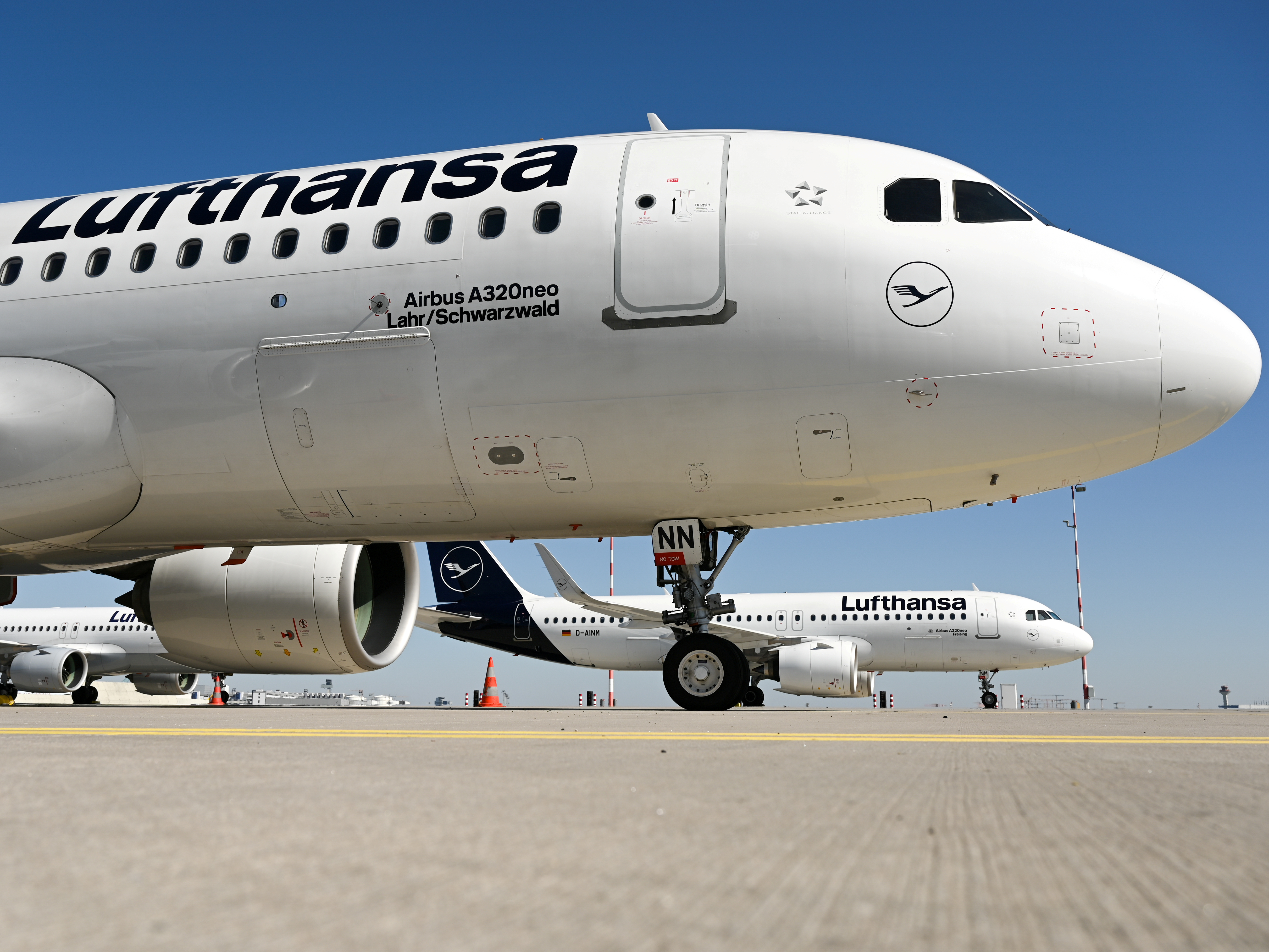- Germany’s Lufthansa has been hit particularly hard by the pandemic, reporting losses of around $1 million per hour.
- The 67-year-old flag carrier relaunched in 1953 following the dissolution of its initial iteration after World War II.
- During its tenure in the world’s skies, Lufthansa has established itself as one of the world’s leading premium brands.
- The German government ultimately stepped in on May 25 to offer assistance in the amount of €9 billion (roughly $10 billion).
- Visit Business Insider’s homepage for more stories.
Germany’s largest airline is in trouble.
Like most global carriers, Lufthansa has found itself bleeding money as its planes sit idle at airports across the country. The novel coronavirus has effectively crippled its core business which, as a flag carrier, including bringing people to and from Germany, a country under lockdown with its air borders largely closed.
Demand for Lufthansa’s secondary focus, using its hub airports in Frankfurt and Munich as intercontinental connecting points, has also evaporated as few travelers venture outside their home countries for fear of contracting the virus or being stranded abroad.
Though initially believed to be financially sound in the event of a downturn, the unique circumstances created by the pandemic has been particularly detrimental to larger airlines, Lufthansa included. Business Insider Deutschland recently reported that the airline is losing $1 million per hour as its primary revenue earners are grounded with little ability to generate any income besides flying cargo.
The past few months have seen the airline operate some flights, typically flying empty to the furthest outposts of the world such as Christchurch, New Zealand, and bringing stranded Germans back home, as well freight operations on passenger aircraft. The airline is now dependent on its government for a lifeline, with Germany offering €9 billion (around $10 billion) in aid with strings attached.
Take a look back at the famed German airline.
Lufthansa in its current form was founded in 1953 as Aktiengesellschaft für Luftverkehrsbedarf, roughly translated to "public limited company for aviation needs," also known as Luftag.

Source: Lufthansa Group
The first iteration of the company dates back to 1926 but that was shuttered by the Allied Powers after taking control of West Germany. Like most, the first Lufthansa arose out of a need to quickly connect cities for the transport of mail and people.

Source: Lufthansa Group and Periscope Film
After purchasing the former company's crane trademark and adopting its blue and yellow colors in 1954, Luftag began going by Lufthansa.

Source: Lufthansa Group
The first flights to restore the divided nation's flag carrier came in on April 1, 1955, with the first two flights departing from Hamburg and Munich, the latter becoming a hub for Lufthansa.

Source: Lufthansa Group
The new airline was based in Cologne, where the present-day Lufthansa Group remains today. Hamburg would be a maintenance base for Lufthansa.

Source: Lufthansa Group and Periscope Film
Lufthansa then began growing its domestic route network that centered around Frankfurt, an approximate mid-point for the country, which remains the airline's largest hub today.

Source: Lufthansa Group and Periscope Film
While the initially state-owned carrier had once used German aircraft in its fleet, including those from Junkers, the war had put them out of commission.

Source: Periscope Film
The new Lufthansa would instead use Western aircraft from Lockheed, Convair, and Douglas in its early days. Among those in the early Lufthansa fleet included the Douglas DC-3,

Source: Periscope Film
Lockheed L-1049 Constellation,

Source: Periscope Film
And the Convair 340.

Source: Periscope Film
Once a domestic network was established, intra-European operations grew to nearby countries, and eventually, overseas operations were launched.

Source: Lufthansa Group and Periscope Film
The Frankfurt-New York route, Lufthansa's flagship to this day, was performed by the Constellation and could be flown in under 12 hours. Today, the route is flown by the Boeing 747-8i, Airbus A340-600, or Airbus A380.

Source: Periscope Film
This time of growth for Lufthansa also saw a focus on refining its high-quality service.

Source: Lufthansa Group and Periscope Film
Flying then was a luxurious experience complete with multi-course meals, wine pairings, and seemingly unlimited champagne to ease passengers through the journey.

Source: Periscope Film
Lufthansa was even the first airline to offer draft beer on its flights and still offers a special Oktoberfest-themed catering menu to this day.

Source: Periscope Film
The focus on luxury can even be seen today as Lufthansa is one of the few airlines to still offer a true first-class cabin on its long-haul aircraft.

While most have abandoned the ultra-luxurious cabin, Lufthansa doubled down and even has a dedicated First Class Terminal for premium cabin passengers at its Frankfurt hub.

Separate from the main concourse, the terminal is complete with its own check-in area, security checkpoint, and passport control. Passengers are shuttled directly to their planes via a private car.

Before boarding or in-between flights, travelers here can enjoy a meal,

Have a drink at the bar,

Take a rest in a private bedroom,

And even enjoy a bath, complete with Lufthansa's famous first-class rubber ducks, which have become a collector's item.

The symbol of Lufthansa's first class, a red rose, was implemented in 1958 and remains today with a rose at every seat in the cabin.

Source: Lufthansa Group
Lufthansa entered the jet age in 1960 with the Boeing 707, a four-engine jet popular with many of the world's global airlines at the time.

Source: Lufthansa Group
The new plane cut down travel times significantly and opened up new routes for Lufthansa.

Source: Lufthansa Group and Periscope Film
The airline also placed the first order an up-and-comer, the Boeing 737, becoming the launch customer with its initial order for 21 planes.

Lufthansa continued the trend with the Boeing 747,

Source: Lufthansa Group
McDonnell Douglas DC-10,

Source: Lufthansa Group
And Airbus A300.

Source: Lufthansa Group
Over the years, Lufthansa has established itself as a major international player and connected the newly reunited Germany with the world following the collapse of the Soviet Union in the 1990s.

Lufthansa was fully privatized in 1997 and since then, the Lufthansa Group has acquired multiple airlines from neighboring countries including Swiss International Air Lines...

Source: Lufthansa Group
Austrian Airlines...

Brussels Airlines...

And Air Dolomiti.

Subsidiaries of the group also include Lufthansa Cargo, a dedicated freight unit flying a fleet of cargo aircraft...

Sun Express, a joint venture with Turkish Airlines...

Eurowings, a low-cost airline designed to compete against Ryanair, EasyJet, and Norwegian...

LSG Sky Chefs, an air catering service...

And Lufthansa Technik, a maintenance, repair, and overhaul company.

Lufthansa was also a founding member of the Star Alliance, one of the world's first modern-day airline alliances.

Source: Star Alliance
To this day, Lufthansa continues to invest in new innovations from Airbus and Boeing. Among the recent purchases include the Airbus A320neo,

Airbus A350-900 XWB,

Boeing 747-8i,

And the upcoming Boeing 777X.

Lufthansa is also one of the few carriers to operate the Airbus A380.

Lufthansa unveiled a new branding scheme in 2018, designed to give the carrier a more refined and premium look. The color yellow was removed from the aircraft but was maintained in other signage.

The new branding came after a dark moment for the airline in 2015 where a pilot from Lufthansa subsidiary Germanwings intentionally crashed an airliner into a mountain after taking control of the aircraft while his counterpart was in the lavatory.

The brand quickly recovered and as one of Europe's powerhouse airlines, Lufthansa remains a recognized leader in travel but the pandemic has not been kind to its operations.

The sudden loss of demand and countless travel restrictions have tied the hands of its main operation and that of its subsidiaries, causing chaos for the airline and parent company Lufthansa Group.

With losses estimated at $1 million per hour, the airline turned to the German government for a bailout, though the airline is skeptical of accepting an offer that involves the state taking equity.

Read More: German government to bail Lufthansa out of bankruptcy with nearly $10 billion state aid
Source: FlightGlobal
Projections are currently grim for airlines the size of Lufthansa. Rival airline consortium International Airlines Group has estimated a slow return in demand for its intercontinental airlines and Lufthansa is likely facing a similar future.

Lufthansa announced on May 25 that the German government's Economic Stabilization Fund had approved a "stabilization package" of €9 billion euros (around $10 billion) for the airline to mitigate the bleeding.

Source: Lufthansa Group
Lufthansa's boards, as well as the European Commission, will still have to approve the bailout, which includes the German government taking a 20% stake in the airline.

Source: Lufthansa Group and Politico
It'll be the first time that Germany has had a financial stake and say in its airline's affairs since 1997.


